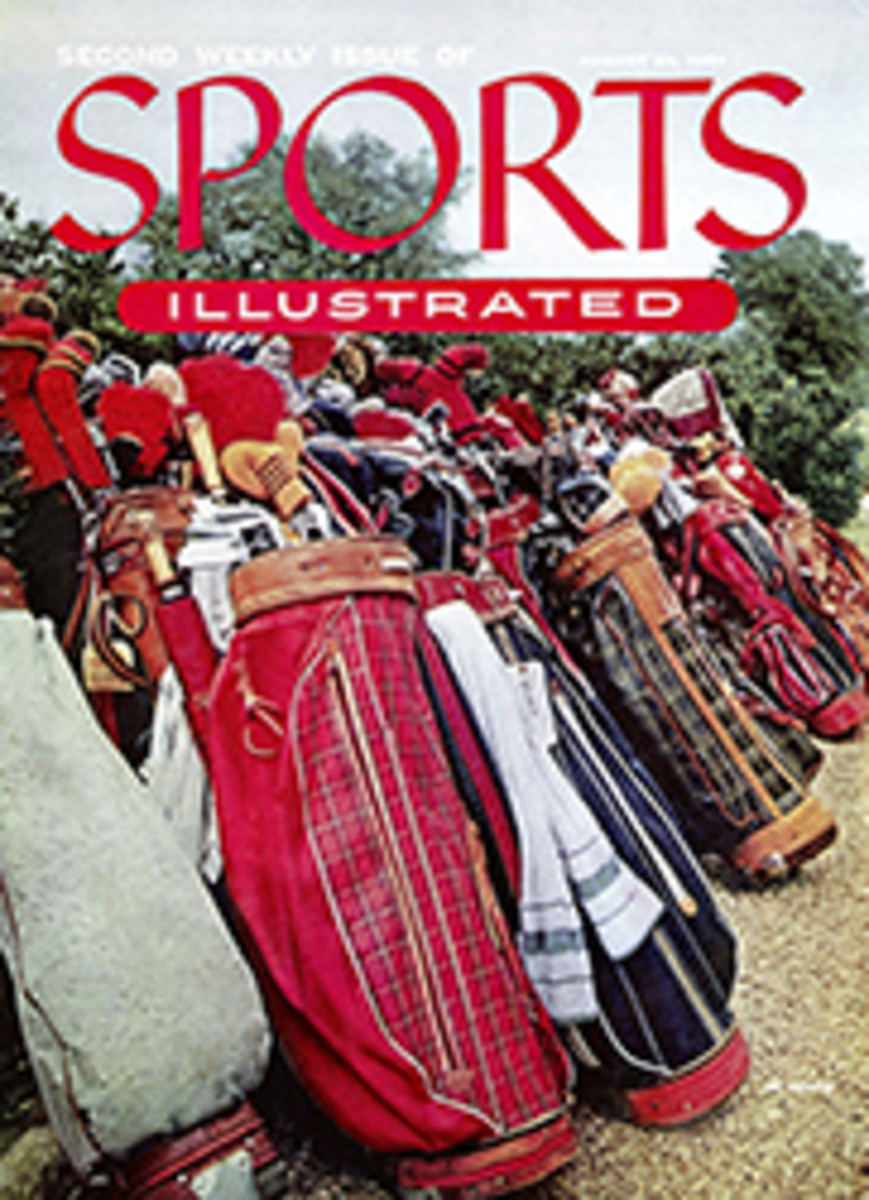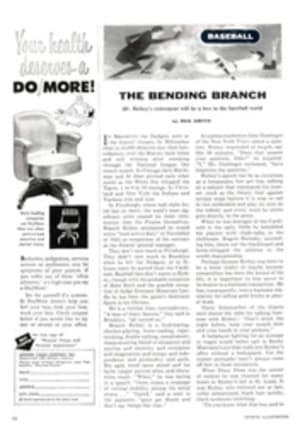
YOU SHOULD KNOW if you are going to take up bird watching
Lots of company
There are about five and one-half billion breeding land birds of some 600 species in the U.S. at this time of the year, and you will have the company of about two million Americans who regularly take to the woods and fields to watch them.
Book & binoculars
Two items are a must from the beginning:
1. A copy of Roger Tory Peterson's A Field Guide to the Birds (Houghton Mifflin, $3.75). Read Peterson's four-page introduction on "How to Use This Book" and you are ready to take to the field with
2. A pair of binoculars. Start out with an inexpensive pair—who knows, birds may bore you. Your mounting interest will lead you eventually to a price range of from $25 to $200 for this piece of equipment. When you become a more seasoned bird watcher you will consider a $25 pair excellent starting equipment for children. Bausch & Lomb makes the top grade American binoculars. Some of the new Japanese six-seven-and eight-power binoculars also are excellent. Their optics are superb and a few are no bigger than the palm of your hand. When you get out into the field you will observe that the Bausch & Lomb balscope is becoming the vogue with the newer bird-watching generation. This is a 60-mm telescope mounted on a tripod and lists complete for $136.35. There are two things to watch for when buying glasses—make sure the lenses are both color-corrected and coated. Color correction means that true color value is transmitted through the glass and coating insures that extraneous light glare is reduced to a minimum, thus producing maximum light transmission. There are two numbers on binoculars. The first indicates magnification power and the larger number refers to the lens diameter—in millimeters. The greater the diameter, the bigger your field of view and the better your light.
You can go to the birds
Birds are most active at sunrise, and being out in the woods on a clear, brisk morning can be one of nature's most rewarding experiences. Actually, there is no closed season for bird watching but when it rains, birds take cover, and when it is too hot they rest and are not easily found. Peak seasons of the year are during the spring and fall migrations.
Or send for them
You can start the whole family off on being interested in birds by setting up a bird-feeding station. This attracts many species that ordinarily wouldn't light in your area. The first feeder should be an open one, such as a shelf at a window or a tray on a post. The first food should be conspicuous—chunks of white bread. Birds will spot the bread from a block away and investigate. When they get used to this, feed them sunflower seeds, suet and peanut butter.
How to sit
There is no special clothing for bird watching; anything in a comfortable How to sit sports outfit will do. Veterans also equip themselves with a shooting stick. This double-purpose walking stick and chair has a handle which opens into a seat, the stick and your two legs forming a tripod from which you can maintain a steady hand while focusing your binoculars. This handy aid will cost from $13.50 to $30.
Rash precaution
Bird watchers have no special immunity from poison ivy (SPORTS ILLUSTRATED, Aug. 16). Try using Kerodex if you are susceptible. This cream, when spread on exposed parts of the body, is about the best protection developed to date.
If you are going deep into the woods, carry a Kumbak. This is a combination compass, waterproof match box and whistle. It slips into the pocket and costs $2.75.
Learn to hear
After learning how to identify birds by sight, you will want to identify them by ear. Norma and Jerry Stillwell have prepared two volumes of authentic bird songs on 33‚Öì long-playing microgroove records, each priced at $7.95. In addition, Cornell University Press and Book-Records, Inc. have published a textbook and a record packet titled Songbirds of America ($4.95), compiled by Cornell Ornithologists Arthur A. Allen and Peter P. Kellogg.
Learn to talk
Next you will want to talk to birds. For centuries Europeans have been using a bird-calling device which is becoming popular in this country. One type, invented by Roger Eddy and known as the Audubon Bird Call, sold 450,000 last year alone. It costs $1.50. Anyone can work it immediately; all you do is twist a pewter peg that is set in a birch cylinder. The sound does not imitate any particular bird song; curiosity seems to lure them.
Keeping score
Keeping score is fun. The National Audubon Society, 1130 Fifth Ave., New York 28, can supply you with daily field cards, 10 for 20¢ or 100 for $1.75. These cards are broken down regionally into the Pacific states, the Central United States or east of the Mississippi. Scoring can be done by day, by year or for life. The "lifers" are the real thrill of this game. A "lifer" is the first bird of a particular species you have ever seen. Bird watchers will swap tales of rare "lifers" for hours. Scoring birds can develop into a real competitive hobby.
Be a joiner
The National Audubon Society has a junior membership for children and it is estimated that since 1910 nine million children have enrolled. Among the many benefits, attractive publications about birds and animals are sent to members. For the adults, two-week summer sessions are held in each of the Audubon's three camps: Todd Wildlife Sanctuary near Portland, Me., the Audubon Center, Greenwich, Conn., and Donner Pass in the High Sierra, Norden, Calif. The Audubon Magazine can come your way for $3.00 a year. Memberships range from the regular fee of $5.00 a year to life memberships at $200. There are several hundred local Audubon clubs in the U.S., most of them affiliated with the national group. Drop a line to 1130 Fifth Ave. and the Audubon Society will tell you the local club nearest you.
More books
The First Book of Birds by Margaret Williamson (Franklin Watts, Inc. $1.75) makes an excellent gift for very young children. Older children will enjoy John Kieran's Introduction to Birds (Garden City Books, $2.95). One of the most valuable books for the bird watcher is Dr. Olin Sewall Pettingill Jr.'s A Guide to Bird Finding East of the Mississippi (Oxford University Press, $6.00) and a second volume for the area west of the Mississippi. It lists the best bird regions state by state and breaks them down to the nearest cities. The different species in the regions, how to get there and the seasons in which the birds appear are features of the book. A unique service offered by the guide is a complete listing of bird sanctuaries in North America. A handsome gift for any bird lover is Land Birds of America, by Robert Cushman Murphy and Dean Amadon (McGraw-Hill, $5.95). The color plates are superb.
Watching in the rain
On rainy weekends, take the family to see the colorful bird exhibits at your local museum. For information on your nearest and most complete natural history museum, write to the National Research Council, National Academy of Science, Washington, D.C., or to the Smithsonian Institution, Washington, D.C. Your state library or state university can also furnish you with the names of all good natural history museums in your area. Happy watching.

